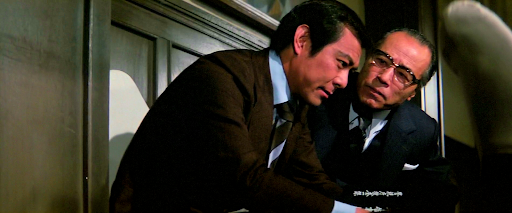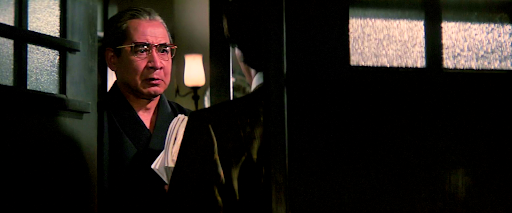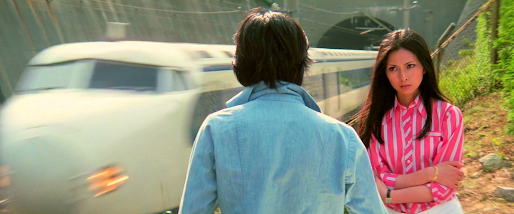Main Line to Terror / 動脈列島 / Domyaku retto (1975)
Obscure Japanese Film #192
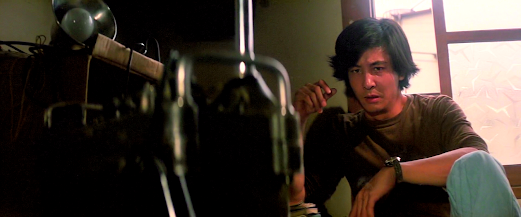 Masaomi Kondo
Masaomi Kondo
Akiyama (Masaomi Kondo)is a young doctor furious about the death of one of his patients, which hebelieves was the result of her living right next to a shinkansen (bullet train) track as the intense noise and vibrationbrought on memories of World War 2 air raids and induced repeated panic attackswhich wrecked her health. It’s been around a decade since the advent of thebullet train, and many other people living near to the lines have also sufferedgreatly, but the rail bosses have done little to address the problems, soAkiyama decides it’s time to take matters into his own hands. He persuades hisgirlfriend Tomoko (Keiko Takahashi), a nurse, to steal a phial ofnitro-glycerine from the hospital and uses it to create a bomb, threatening todestroy a bullet train in ten days’ time if Japanese National Railways (JNR)fail to address the issues immediately. The Police Commissioner (Eitaro Ozawa)calls in investigator Takigawa (Jiro Tamiya), who marshals all the forces athis disposal in a race against time to catch Akiyama and avert a majordisaster…
This Tokyo Eigaproduction has the type of story that can hardly fail to be gripping, but alsocalls attention to the issue of noise pollution from high-speed trains, whichwas something of a hot topic at the time. The film was based on a 1974 novel bythe leftist writer Ikko Shimizu (1931-2010) which won the Mystery Writers ofJapan Award. His work had a strong element of social commentary and often dealtwith themes such as corruption in big business, but was only occasionallyadapted for the big screen. In this case, the book was inspired by a lawsuitfiled against JNR by 575 residents of Nagoya City which would drag on for overa decade (the residents eventually received substantial compensation and theoriginal bullet trains were gradually replaced by quieter models). However, theidea of one of these protestors turning terrorist appears to have been Shimizu’sinvention. As the story makes JNR look pretty bad, it’s unsurprising that theyrefused to co-operate with the film company, so how certain scenes could havebeen pulled off without their help is anyone’s guess.
Co-written and directedby Yasuzo Masumura, by this time a freelancer after the collapse of Daiei, it’sefficiently made but one of the least characteristic of his works. The plot hasits implausibilities, but also a strong police procedural element and amemorable climax involving a bulldozer which made me wonder whether thefilmmakers had seen the previous year’s American TV movie Killdozer.
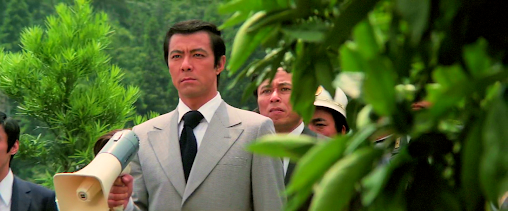
Star Jiro Tamiya was aMasumura favourite who had previously featured in the latter’s Black Super-Express (1964), which alsohad a plot revolving around the shinkansen.His co-star, Masaomi Kondo, had been around for a while, having debuted in ShoheiImamura’s The Pornographers (1966),but was mostly known for his TV work at this point, and the part of Akiyamamarked his biggest film role to date. The rest of the cast features somewell-known faces – including Meiko Kaji as a barmaid who falls for Akiyama andSo Yamamura as the president of JNR – but the characters are generally on thethin side and don’t give the actors many opportunities to impress. Not that itmatters much – the film rattles along at high speed much like the trains itfeatures, and there’s also a pretty decent score by Hikaru Hayashi, who oftenworked with Kaneto Shindo as well as Masumura.
Toei released thesimilarly-themed Shinkansen daibakuhaaka Bullet Train the same year.
Note on the title: The film is sometimes referredto in English as Dynamic Islands, but a more accuratetranslation of theJapanese title is ‘Artery Archipelago’, which would make sense if one added ‘ofthe’ in the middle.

